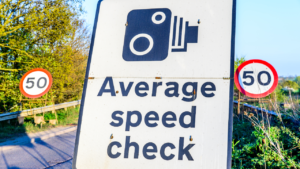Finding your best jogging pace is key to better running and avoiding injuries. Over 621 million people worldwide run often, but 70% get hurt. Dr. Good Deed has made a detailed guide to help you find your perfect pace.
Table of Contents
ToggleIn this article, you’ll find out what affects jogging speeds and how to know your fitness level. You’ll also learn safe ways to get faster. This guide from Dr. Good Deed’s clinic is for everyone, whether you’re new to running or have been doing it for years.
The Importance of Finding Your Ideal Pace
As a runner, finding your ideal pace is key for staying injury-free and performing well. Your pace affects your injury risk and how much you enjoy running. It’s important for both new and seasoned runners to understand pacing.
How Pace Affects Injury Risk and Performance
Running at the right pace helps avoid injuries. Running too fast or slow can harm your body. This includes joint pain, muscle fatigue, and stress fractures.
Your pace also affects how efficient and long you can run. Running at the right pace lets you go farther with less effort. It helps you stay steady and save energy for longer runs.
Why Pace Matters for Beginners and Experienced Runners

Beginners need to find a good pace to avoid injuries. Running too hard can lead to burnout and physical problems. A comfortable pace helps beginners build endurance and confidence.
For experienced runners, finding the right pace is also important. It helps them reach new personal bests and meet their goals. Whether it’s for training or races, knowing your pace is crucial.
Finding your ideal pace is a journey of discovery and trial. Listen to your body and use technology to adjust your pace. This balance is key for both new and experienced runners.
Understanding Average Jogging Speeds

Jogging can be tricky because speeds vary a lot. Whether you’re new or experienced, knowing typical speeds helps. It lets you find your best pace and improve your workouts.
Factors That Influence Jogging Speed
Many things affect your jogging speed. These include your fitness, age, where you run, the weather, and how long you’ve been running. Top athletes might run at 6 mph or faster. Beginners might start at 6 mph, or about 10 minutes per mile.
Studies show women run at about 5.8 mph on average. Men run at about 6.6 mph. But, these speeds can change a lot based on your fitness and what you like.
Where you run and the weather also matter. Running uphill or in hot weather can slow you down. It’s important to adjust your pace for these conditions.
Finding the right jogging pace is key. Knowing what affects your speed helps you make your workouts better. This way, you can reach your fitness goals more easily.
Calculating Your Average Jogging Speed

Knowing your average jogging speed is key for setting goals and tracking your progress. To find your speed, measure the distance and time it takes to cover it. This simple step will show your pace, helping you see how you’re getting better.
- Choose a measured route. This could be a track, a marked trail, or a route you’ve mapped out using a GPS app or device.
- Time yourself as you jog the entire distance. Be sure to start and stop the timer precisely to get an accurate time.
- Divide the distance you covered by the time it took you to complete the route. This will give you your average jogging speed in units like minutes per mile or kilometers per hour.
For example, if you cover a distance of 1 mile in 10 minutes, your average jogging speed would be 6 minutes per mile or 10 miles per hour. Tracking your pace over time can help you see how your fitness level is improving.
Remember, your jogging speed can be influenced by factors like terrain, weather, and your overall fitness level. Use this method to calculate your average speed on different routes and under various conditions to get a well-rounded understanding of your pace.
Determining Your Fitness Level

Knowing your current running ability is key to finding your best jogging pace. Understanding your fitness helps you set pace goals and create a training plan. This plan will boost your running skills.
Assessing Your Current Running Ability
To check your fitness, look at a few things:
- Your current 5K finish time: Try to beat the average 5K pace of 11:47 minutes per mile.
- Your resting heart rate: It should be between 60 to 100 beats per minute.
- Your target heart rate during exercise: Aim for 50% to 85% of your maximum heart rate, based on age.
- Your body composition: Keep a healthy BMI of 18.5 to 24.9 and a waist size under 35 inches for women and 40 inches for men.
- Your muscular strength: Try to meet the push-up counts for your age and gender to show good fitness.
Setting Realistic Goals for Pace Improvement
After checking your current running, set pace goals you can reach. Here are some targets:
- For a 5K race, aim to beat the average pace of 11:47 minutes per mile.
- For a half marathon, aim for a pace between 1:45 to 3:56 minutes per mile.
- For a full marathon, aim for a pace between 2:37 to 10:55 minutes per mile.
Make sure your pace goals match your fitness level and progress. Stick to your training, rest well, and listen to your body. This will help you meet your running goals.
Techniques for Improving Your Pace

If you want to run faster, there are many ways to do it. You can try interval training, speed work, and strength training. These methods can make you more efficient and faster.
Interval Training and Speed Work
Interval training is great for getting faster. It mixes fast runs with slow recovery times. This builds your endurance and mental strength.
Speed work is also effective. It includes running at specific, quick paces. This helps you run even faster.
Strength Training for Runners
Strength training is important too. It makes your legs stronger, which helps you run faster. Try lunges, squats, and calf raises.
Being flexible is also key. It lets you take longer strides. Make sure to stretch and warm up regularly.
For lasting improvements, mix interval training, speed work, and strength training. Stay consistent and listen to your body. You’ll get faster and more efficient with time.
Average Jogging Speed

The average jogging speed is between 4 to 6 mph. This is about 6.44 to 9.66 km/h. The average is around 5 mph or 8 km/h. This means it takes about 12 minutes to jog a mile or 7:30 to jog a kilometer.
Many things can change how fast someone jogs. Strava says the average run is 9:53 per mile. This is just over 6 miles per hour. Men jog faster than women, with men averaging 9:03 per mile and women 10:21 per mile.
Age, fitness, and training also affect jogging speed. Older people jog slower than younger ones. Men generally jog faster than women because of their body composition.
Jogging is slower than running. But, the exact difference can vary. Still, jogging is usually slower than running.
Improving Jogging Speed
To jog faster, focus on form and strength. Doing interval training and speed work helps. These improve your running and make you faster.
Find your best pace and try to get better slowly. Always think about preventing injuries and staying fit. Knowing the average jogging speeds and using the right methods can help you reach your fitness goals.
Adjusting Your Pace for Different Terrains

As a runner, you’ll face many terrains. This includes flat roads, hilly inclines, and rugged trails. It’s key to adjust your pace for each terrain. This helps you run better, avoid injuries, and perform at your best.
Running on Hills and Inclines
Running up hills is different. It takes more effort and oxygen. You need to slow down to keep up. Running down hills, on the other hand, can make you go faster.
Downhill running can be up to 55% faster than going uphill.
Adapting Your Pace for Trail Running
Trail running is unique. The terrain is uneven, and there are obstacles. It’s hard to keep a steady pace. You should focus on how hard you feel you’re working.
Watch your heart rate and breathing. This helps you stay in the right zone. It keeps your pace steady on trails.
Being adaptable is key when running on different terrains. Understanding how your speed changes helps. You can then run better on hills, inclines, and trails.
Monitoring and Tracking Your Progress

To get better at running, it’s key to keep an eye on your progress. Today, we have cool tech to help us track our runs. GPS watches and apps are must-haves for anyone wanting to run faster.
Using GPS Watches and Running Apps
GPS watches and apps have lots of features to track your runs. They can show your pace, distance, and heart rate. This info helps you understand your running better and improve your speed.
Apps like Runkeeper let you see your progress over time. You can track your changes over 30 days, 90 days, a year, or your whole running history. It’s smart to check your progress every four to six weeks to see real changes.
- Runkeeper app offers progress tracking options sorted by last 30 days, 90 days, calendar year, and all-time
- Recommended time frame for tracking progress is every four to six weeks
- Progress in fitness is generally observed every four to six weeks of training
Some apps, like the one in a study from the Journal of Strength and Conditioning Research, use heart rate and speed to track your training. This way, you can see how you’re doing without needing a track.
Using GPS watches and apps gives you insights into your running. This helps you adjust your training and reach your running goals.
Preventing Injuries and Overtraining

As you try to get faster at jogging, it’s key to prevent injuries and avoid overtraining. Use proper warm-up and cool-down routines. Also, listen to your body’s signals. This helps keep you running well and enjoying it more over time.
Proper Warm-Up and Cool-Down Routines
A good warm-up and cool-down can really help prevent injuries. Before running, spend 5-10 minutes stretching and doing dynamic exercises. This gets your muscles and heart ready for the run.
After running, do light jogging, walking, and static stretches for the same amount of time. This helps your body recover and prevents soreness.
Listening to Your Body’s Signals
It’s vital to listen to your body and know when you’re overdoing it. If you see swelling, muscle pain, or a long-lasting ache, slow down and rest more. Aim to increase your weekly running by only 10% to avoid injuries.
By paying attention to your body and adjusting your training, you can keep running without getting hurt.
FAQ
What factors influence average jogging speed?
Your jogging speed can change based on your fitness, age, and the terrain. Weather and your running experience also play a role.
Why is finding your ideal jogging pace important?
Finding the right jogging pace is key. It helps prevent injuries and improves your running. For new runners, it keeps them safe. For seasoned runners, it helps them run faster.
How can I calculate my average jogging speed?
To find your jogging speed, you need to measure and track it. This helps set goals and see how you’re doing. Knowing your speed lets you improve your training.
How can I determine my current fitness level and running ability?
To know your fitness and running skills, you need to assess them. Then, set goals that fit your abilities. This helps you create a training plan that works for you.
What techniques can help me improve my jogging pace?
To get faster, try interval training, speed work, and strength training. These exercises boost your endurance and speed. They make you a better runner.
How do I adjust my pace for different terrains?
Adjusting your pace for different terrains is important. Learn to run faster on hills and trails. This makes you more efficient on various routes.
How can I monitor and track my running progress?
Use GPS watches and running apps to track your runs. They help you understand your performance. This lets you make better training choices to improve your speed.
How can I prevent injuries and avoid overtraining?
To stay injury-free, warm up and cool down properly. Listen to your body to avoid overdoing it. This keeps you healthy and enjoying running for longer.
Source Links

This article is medically reviewed by Dr. Chandril Chugh, Board-Certified Neurologist, providing expert insights and reliable health information.
Dr. Chandril Chugh is a U.S.-trained neurologist with over a decade of experience. Known for his compassionate care, he specializes in treating neurological conditions such as migraines, epilepsy, and Parkinson’s disease. Dr. Chugh is highly regarded for his patient-centered approach and dedication to providing personalized care.








